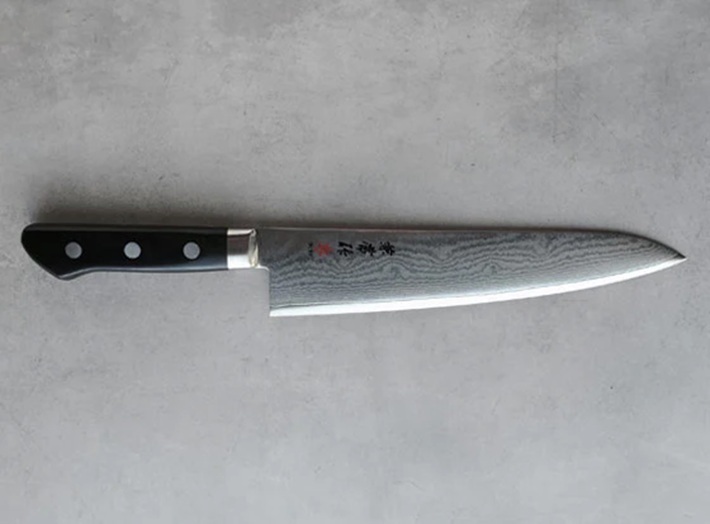For cooking enthusiasts who prefer precision, balance, and razor-sharp elegance, the Japanese knife isn’t just any kind of kitchen tool, but it’s a whole culinary experience. Driven by a passion for precision and durability that can stand the test of time, these knives deliver exceptional sharpness, lightweight manoeuvrability, and stunning aesthetics.
Whether you’re preparing sashimi or chopping vegetables, a Japanese knife glides effortlessly through ingredients, transforming your food preparation into a true art form. Once you feel the difference, you won’t look back. Regardless of if you’re about to make the switch of just expanding your existing knife collection, here’s why Japanese craftsmanship is unparalleled.
Know Your Knife Type: Different Blades for Different Tasks

Take your Japanese-inspired kitchen to the next level with a sharp and durable Japanese chef’s knife. While a good chef can work magic with a single blade, using the right knife for each task makes prep work faster, cleaner, and far more enjoyable. When it comes to Japanese knives, different designs are designed with different precision and task in mind.
Gyuto: The Japanese Chef’s Knife
The Gyuto is Japan’s equivalent of the traditional Western chef’s knife. It’s versatile and well-balanced, making it perfect for slicing, dicing, chopping, and mincing. Its thinner and harder blade compared to Western knives allows the Gyuto to achieve cleaner cuts and maintain its sharpness longer making it the ideal option for chefs who require precision in every cut.
Santoku: Three Virtues Knife
Looking for a versatile and compact knife? Check out the three virtues knife or the so-called Santoku. Known for its ability to cut meat, fish, and vegetables, it features a flat edge and a rounded tip and excels at making straight, downward cuts. Its shorter length offers better control, particularly for home cooks or those with smaller hands.
Nakiri: The Vegetable Knife
Name a better knife that is tailored specifically for slicing vegetables, than the Japanese Nakiri. Its outstanding design comes with a straight, rectangular blade that allows for effortless paper-thin cuts. Its flat edge ensures that the knife maintains complete contact with the cutting board, making it a preferred choice for chefs focusing on plant-based dishes and those preparing large quantities of produce.
Pan-Kiri: The Bread Knife
Made from high-carbon stainless steel, the Pan-Kiri features an outstanding edge retention and a lightweight design for accurate control. Many Japanese bread knives include classic wooden handles that improve grip and comfort. Whether you’re cutting sourdough or tender brioche, this guarantees neat, beautiful slices every time, making it essential for both home bakers and professional chefs.
Petty: The Utility Knife
The Petty serves as a smaller version of the Gyuto. It’s perfect for precise tasks such as peeling, trimming, and delicate slicing, where a larger knife may feel cumbersome. It works wonderfully for fruits, herbs, and small vegetables.
What to Look for: Important Buying Considerations
The sooner you realise that Japanese chef knives are more than just adding a beautiful blade to your kitchen, the quicker you will spot a good and reliable option that will serve you for many years. Besides picking the ideal type for your intended use, there are some additional factors to keep in mind when shopping.
Blade Material
Premium quality Japanese knives are commonly crafted from hard steels such as VG-10, AUS-10, or carbon steel. These materials provide exceptional edge retention and sharpness. Carbon steel offers outstanding sharpness but necessitates more maintenance to prevent rust, whereas stainless steel is simpler to care for but may require more frequent sharpening.
Handle Comfort
Japanese knives generally have traditional WA handles (either round or octagonal) made from wood, which give a lightweight feel and a natural grip. For the best comfort, opt for one that feels comfortable in your hand during prolonged use.
Weight and Balance
Typically, Japanese knives are lighter than their Western counterparts, featuring a forward balance that promotes precise and controlled cutting. Therefore, it’s important to evaluate how the knife feels in your hand. Comfort and control are crucial here.
Edge Angle and Sharpness
Japanese blades are usually designed with a sharper edge angle, often 15° or less, enabling exceptionally fine slicing. Pick hand-sharpened or honed blades for that characteristic razor-sharp performance.
Craftsmanship and Brand Reputation
Not every knife is made the same. Respected Japanese brands are recognised for their reliable quality and traditional forging methods. So, take into account the manufacturer’s reputation and consult reviews to ensure that you’re investing in a knife that meets your expectations.
Caring Tips: Maintenance Dos and Don’ts
To keep your Japanese knife in excellent condition, always wash it by hand with gentle soap and dry it right away. Never place it in the dishwasher. Utilise a wooden or plastic cutting board to safeguard the blade and steer clear of slicing through bones or frozen items.
Consistently hone the edge with a ceramic rod and sharpen it as necessary with a whetstone. Keep it stored in a knife block or sheath to avoid any damage. Do not let it soak in water and stay away from strong detergents. With the right care, you will expand your knife’s lifespan thus remaining incredibly sharp and ready to use for many years.



